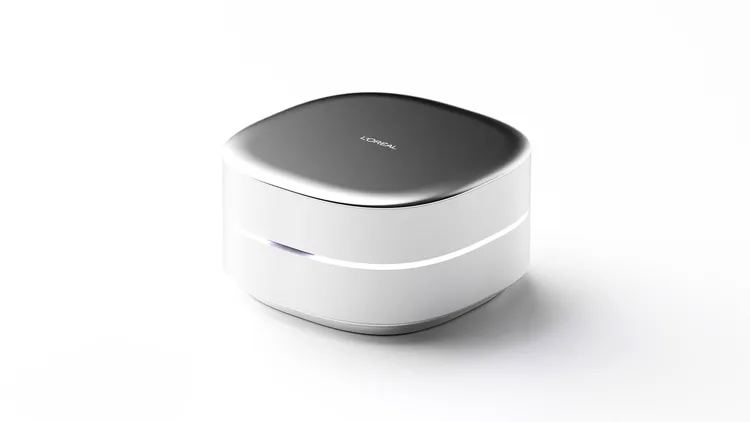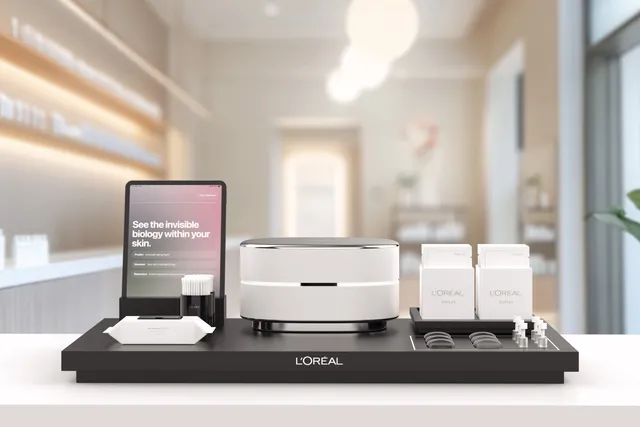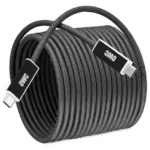Cell BioPrint aims to personalize skincare by telling you how you’re aging, what ingredients will likely work, and what future issues might be.
L’Oréal is stepping into the future of beauty with its latest innovation, Cell BioPrint, a cutting-edge skincare gadget designed to demystify the science of skincare and provide personalized solutions. Announced at CES 2025, this high-tech device is set to revolutionize the way we approach skincare by offering tailored advice on combating signs of aging. But what exactly does it do, and can it deliver on its bold promises?
What Is Cell BioPrint?
Cell BioPrint is the result of an ambitious partnership between L’Oréal and NanoEntek, a Korean startup specializing in advanced biofluid analysis technology. The device employs a fascinating process to analyze your skin’s unique biology. Here’s how it works:
- Sample Collection: Using a facial tape strip, users press it against their cheek to collect skin proteins.
- Preparation: The tape strip is placed in a buffer solution to prepare it for analysis.
- Analysis: The solution is loaded into a cartridge, which is inserted into the Cell BioPrint device. The gadget then processes the sample and captures detailed images of your face.
- Questionnaire: Users answer a brief set of questions about their skin concerns and aging goals.
From there, Cell BioPrint uses proteomics — the study of protein structure and function — to assess the skin’s biological age and overall health. The device’s findings inform its recommendations, offering insights into how well your skin is aging and which skincare ingredients are likely to be most effective for you.

The Science Behind the Claims
L’Oréal claims that Cell BioPrint’s use of proteomics enables it to pinpoint the unique needs of your skin. Beyond merely addressing current concerns, the device can allegedly predict potential issues before they appear. For instance, it may identify a predisposition to hyperpigmentation or enlarged pores, allowing users to take preventive measures.
This level of personalization is particularly appealing in a world where skincare can feel overwhelming. The device aims to cut through the noise of countless serums, creams, and skincare trends by delivering recommendations grounded in science. Instead of relying on generalized advice, Cell BioPrint offers tailored guidance based on your individual biology.
Why Skincare Needs a Revolution
The global obsession with skincare reached new heights during the COVID-19 pandemic. Lockdowns gave rise to self-care routines, and with them, the influence of “skinfluencers” — online beauty experts who turned skincare into a viral phenomenon. Platforms like TikTok became flooded with debates over the merits of vitamin C serums, glycerin versus hyaluronic acid, and the virtues of retinol creams. Skincare became a $100 billion industry, but also a confusing, expensive maze for consumers.
The problem? What works wonders for one person might do nothing for another. This unpredictability has turned skincare into a high-stakes guessing game, where consumers cross their fingers and hope their latest purchase delivers results. Enter Cell BioPrint, which promises to remove the guesswork by using your unique biological data to determine what your skin actually needs.
How Cell BioPrint Stands Out
While CES has seen its fair share of beauty tech over the years, personalization has remained a consistent theme. Cell BioPrint takes this to a new level by applying scientific rigor to skincare recommendations. Imagine every “skinfluencer” telling you that retinol is essential once you hit 30, but Cell BioPrint revealing that your skin won’t actually respond well to it. That level of specificity is groundbreaking in an industry often driven by trends rather than evidence.
Beyond recommendations, the device allows users to monitor changes and progress over time. By repeating tests, you can see how your skin evolves and whether your skincare routine is truly effective.
The Road Ahead
Despite its impressive potential, Cell BioPrint isn’t quite ready for mass-market adoption. L’Oréal plans to pilot the device in Asia later this year, with no confirmed timeline or pricing for a broader launch. However, the company assures that the process is user-friendly, taking only five minutes from start to finish.
As exciting as Cell BioPrint sounds, it’s worth approaching with cautious optimism. Like many beauty tech innovations, its effectiveness will ultimately hinge on rigorous peer-reviewed studies and expert validation. For now, it remains an intriguing glimpse into the future of personalized skincare.
The Bottom Line
L’Oréal’s Cell BioPrint is a bold step toward making skincare more scientific and less overwhelming. If it lives up to its claims, it could transform the way we care for our skin, making expensive trial-and-error purchases a thing of the past. While questions remain about the reliability of its science, one thing is clear: the future of beauty is personal, and Cell BioPrint might just lead the way.










